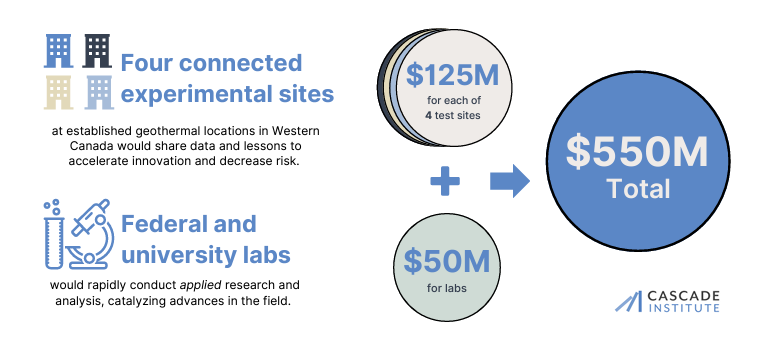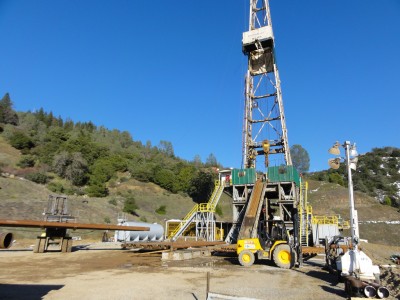Cascade Institute publishes roadmap for ultradeep geothermal power in Canada
Research centre Cascade Institute has published a roadmap identifying gaps and proposing solutions to advancing ultradeep geothermal technologies in Canada.
The Cascade Institute, a research centre at Royal Roads University, has published a roadmap towards the deployment of ultradeep geothermal power technologies for commercial operations in Canada.
The “Ultradeep Geothermal Research and Action Roadmap” can be accessed and downloaded here.
Intended for policymakers, geothermal developers, technology companies, and investors, the roadmap identifies the most promising opportunities and priorities for ultradeep geothermal technology, policy, and regulation; highlights key gaps; and provides guidance for how public and private investment can support efforts to rapidly close those gaps.
Cascade Institute authors and contributors Leighton Gall, Scott Janzwood, Dave Lovekin, Peter Massie, Rebecca Pearce, and Emily Smejkal outline how Canada can launch into the global race to develop and commercialize ultradeep geothermal systems while unlocking geothermal resources at shallower depths along the way.
The Roadmap provides recommendations for how to accelerate R&D and testing, coordinate stakeholders, fill policy and regulatory gaps, and de-risk the industry.
The Cascade Institute had previously received $3 million in funding from three philanthropic funders for a first-of-its-kind-in-Canada ultradeep geothermal (UDG) research program.
Opportunities and challenges for ultradeep geothermal in Canada
Ultradeep geothermal power, in the context of the report, refers to geothermal systems at depths of greater than 5 kilometers. According to the roadmap, tapping just one percent of this geothermal resource in Canada could conservatively generate 77 GW of power, or equivalent to half of Canada’s installed generating capacity in 2021.
However, there are gaps in both technology and policy that need to be addressed for this potential to be developed. On the technology front, there must be solutions to reduce drilling time, improve heat extraction methods, and develop downhole tools and well completion technologies appropriate for very high temperatures.
Policymakers will need to address the lack of regulatory frameworks for permitting of geothermal activities, particularly outside the three provinces of Alberta, British Columbia, and Nova Scotia. Policies relating to geothermal across jurisdictions also need to be harmonized and streamlined to simplify and facilitate investment and project development.
An ecosystem for geothermal innovation
To close the technology gaps, the Cascade Institute proposes a carefully planned and well-coordinated Canadian geothermal innovation ecosystem which leverages both public and private leadership. This will be a CAD 550 million program to construct at least four linked in-field sites at established geothermal locations in Canada.

The test sites would conduct essential research into hard-rock drilling, aiming to dramatically lower CAPEX costs. Sites would also test and improve well-creation, reservoir-creation, and surface-facility technologies and methods. Each test site would be allotted up to CAD $125 million to cover drilling costs, reservoir preparation, and surface facilities. Each would generate about 50 megawatts of power for local or regional consumption.
The roadmap identified six locations in Canada that meet the criteria for a test site. These are all located in Alberta, Saskatchewan, British Columbia, and the Northwest Territories.
Source: Email correspondence



















